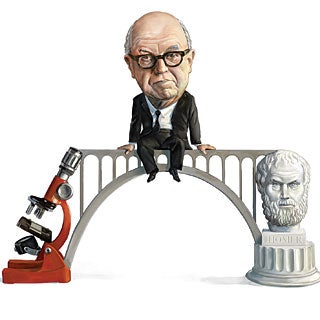Week 1: The Two Cultures
Hi everyone! My name is Sarah Michel, and I’m a first-year environmental science major.
 I related a lot to this week’s topic on the separation of the two cultures. Since my childhood, I have always gravitated towards the STEM fields in school and away from humanities. I think of myself as a logical thinker and good at math; I even wrote one of my college essays about that. I was never the greatest at drawing, ceramics, or theatre, the more artistic classes offered at my high school. This separation of the two cultures led me to believe for most of my life that I was not creative and had to go into a STEM field. However, recently I realized that the thing I’m most passionate about is not math or science, but fashion. Yet because this wasn’t offered as a class, and because I didn’t excel in the typical humanities and artistic courses offered in school, I completely neglected this interest. It wasn’t until recently that I realized that the idea of a third culture can exist and is necessary. Something from the interview with Steven Pinker that resonated with me was his statement about how the third culture allows for more collective knowledge; I hope to take this idea into my personal life by using my degree in environmental science and applying it to fashion, thus creating sustainably made clothing.
I related a lot to this week’s topic on the separation of the two cultures. Since my childhood, I have always gravitated towards the STEM fields in school and away from humanities. I think of myself as a logical thinker and good at math; I even wrote one of my college essays about that. I was never the greatest at drawing, ceramics, or theatre, the more artistic classes offered at my high school. This separation of the two cultures led me to believe for most of my life that I was not creative and had to go into a STEM field. However, recently I realized that the thing I’m most passionate about is not math or science, but fashion. Yet because this wasn’t offered as a class, and because I didn’t excel in the typical humanities and artistic courses offered in school, I completely neglected this interest. It wasn’t until recently that I realized that the idea of a third culture can exist and is necessary. Something from the interview with Steven Pinker that resonated with me was his statement about how the third culture allows for more collective knowledge; I hope to take this idea into my personal life by using my degree in environmental science and applying it to fashion, thus creating sustainably made clothing.
 |
The two cultures are so deeply ingrained in education, from the idea of left and right-brained people to the UCLA campus geography. I appreciated what Vesna stated in “Toward a Third Culture: Being in between”, that building the bridge between humanities and science through art needs to start in education because “academia is generally friendlier to someone searching for a yet-to-be-defined path than industry with its pressures to produce.” Our society still emphasizes education, and thus this integration of a third culture needs to start there.
Sources:
Graham-Rowe, Duncan. “John Brockman: Matchmaking with Science and Art.” WIRED UK, WIRED UK, 4 Oct. 2017, www.wired.co.uk/article/matchmaking-with-science-and-art.
Snow, C. P., and Stefan P. Collini. “The Scientific Revolution.” The Two Cultures, 1959, doi:10.1017/cbo9781139196949.004.
Vesna, Victoria. “Toward a Third Culture: Being In Between.” Leonardo, vol. 34, no. 2, 2001, pp. 121–125., doi:10.1162/002409401750184672.
YouTube, 14 Oct. 2010, youtu.be/zDZFcDGpL4U.
YouTube, 18 May 2010, youtu.be/1BUbVc7qVpg.
Image sources:
“C.P. Snow, the Two Cultures, and Product Quality.” James L Adams-People and Products, jamesladams.typepad.com/blog/2012/11/cp-snow-the-two-cultures-and-product-quality.html.
Sheninger, Eric. The Art and Science of Leadership, 28 Oct. 2018, esheninger.blogspot.com/2018/10/the-art-and-science-of-leadership.html.
“UCLA Campus Map PDF.” Scouting Web, 21 June 2018, scoutingweb.com/ucla-campus-map-pdf/.

Hey Sarah,
ReplyDeleteI had a great time reading your blog and learning about your experience! My name is Dave Ho, and being a Computer Science major, I deeply resonate with your experience. I’ve always lived in a tech bubble growing up in the Silicon Valley and missed out on experiencing the literary and artistic fundamentals that some core computer science ideas are based on. Your idea of creating fashionable clothing while helping the environment with sustainable materials is very interesting and I hope to continue hearing more about it!